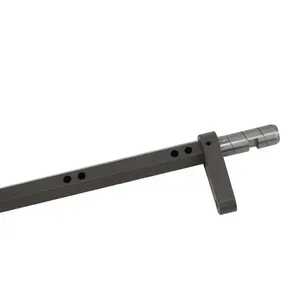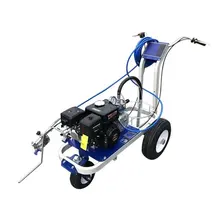Understanding Balancing Shaft Gear
Balancing shaft gear is an integral component in various mechanical systems, designed to reduce vibrational forces and enhance the stability of rotating assemblies. This category encompasses a range of products tailored to meet the specific needs of different applications, ensuring the smooth operation of machinery.
Types of Balancing Shaft Gear
The diversity in balancing shaft gear is evident in the materials and construction used. Steel balancing shafts are known for their robustness and longevity, making them suitable for scenarios requiring precision and control. In contrast, graphite balancing shafts are significantly lighter, offering an alternative for applications where weight is a critical factor. For those seeking a hybrid solution, multi-material balancing shafts combine the benefits of both steel and graphite, providing a versatile option for a wide range of users.
Applications and Flexibility
The application of balancing shaft gear spans across various industries, with a notable presence in sports equipment such as golf clubs. The flex of a shaft is a crucial attribute that influences the trajectory and distance of a golf ball. A range of flex options are available to cater to different swing speeds. For instance, a low-flex balancing shaft is ideal for players with a fast swing, while those with a slower swing may benefit from a high-flex shaft. Beginners are often recommended to opt for shafts with greater flexibility to accommodate their developing technique.
Features and Advantages
Each balancing shaft gear is characterized by its torque, which is a pivotal feature affecting the feel and performance of the shaft during use. Torque ratings vary, with graphite shafts typically exhibiting higher degrees of torque, resulting in a softer feel. Conversely, steel shafts generally have lower torque, providing a firmer feel. The choice of torque level should align with the user's preference and the specific demands of their activity or machinery.
Materials and Construction
The construction of balancing shaft gear is a meticulous process, with materials carefully selected to ensure optimal performance. The durability of steel is complemented by the lightweight nature of graphite, while multi-material designs offer a balanced approach. The engineering behind these shafts takes into account factors such as weight distribution, tensile strength, and resistance to wear and tear, culminating in a product that meets the rigorous demands of its intended use.
Selecting the Right Balancing Shaft Gear
Choosing the correct balancing shaft gear requires an understanding of the specific requirements of the equipment or activity. Factors such as swing speed, desired flex, torque, and material properties all play a role in determining the most suitable shaft. While the selection process can be complex, the variety of options available ensures that there is a balancing shaft gear to meet the needs of virtually any application.





























 浙公网安备 33010002000092号
浙公网安备 33010002000092号 浙B2-20120091-4
浙B2-20120091-4